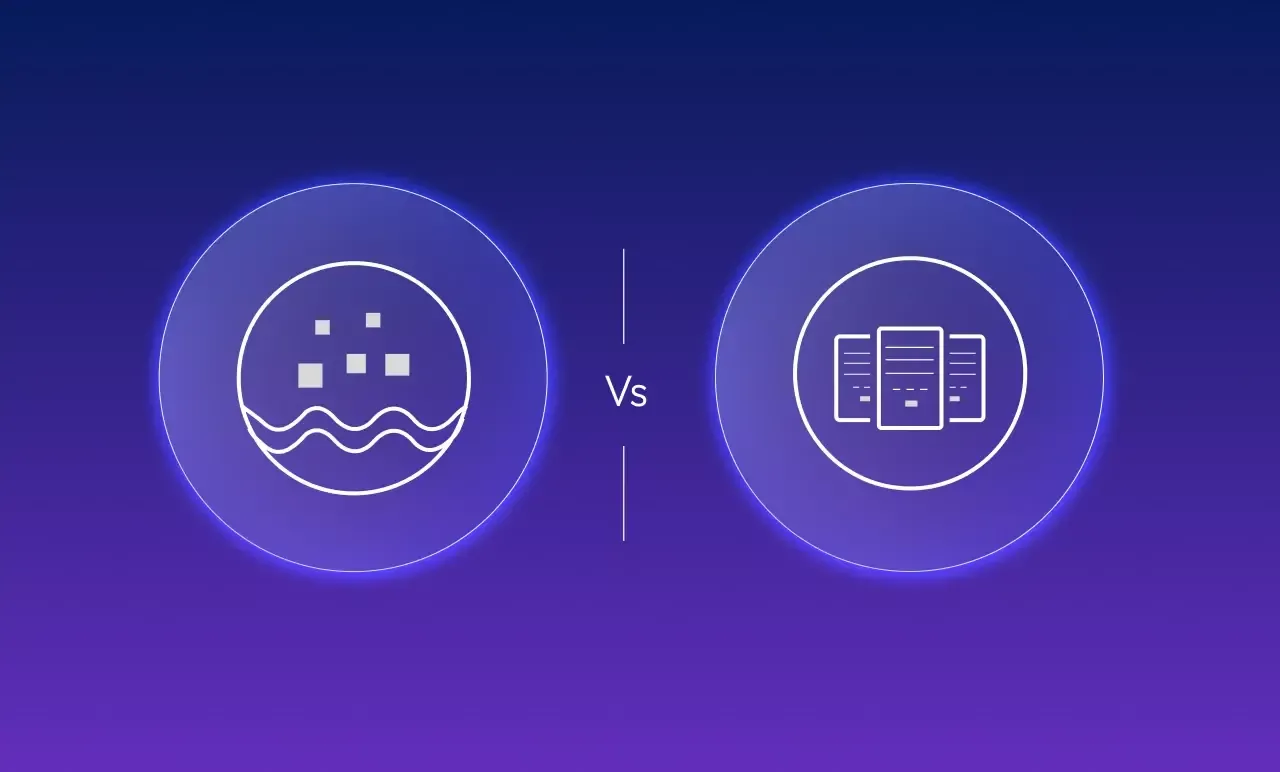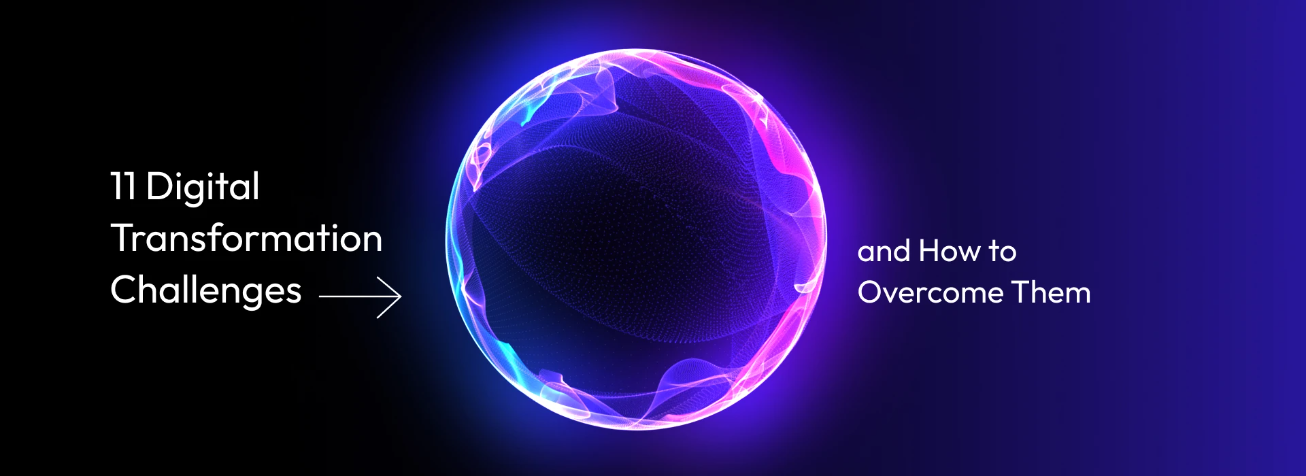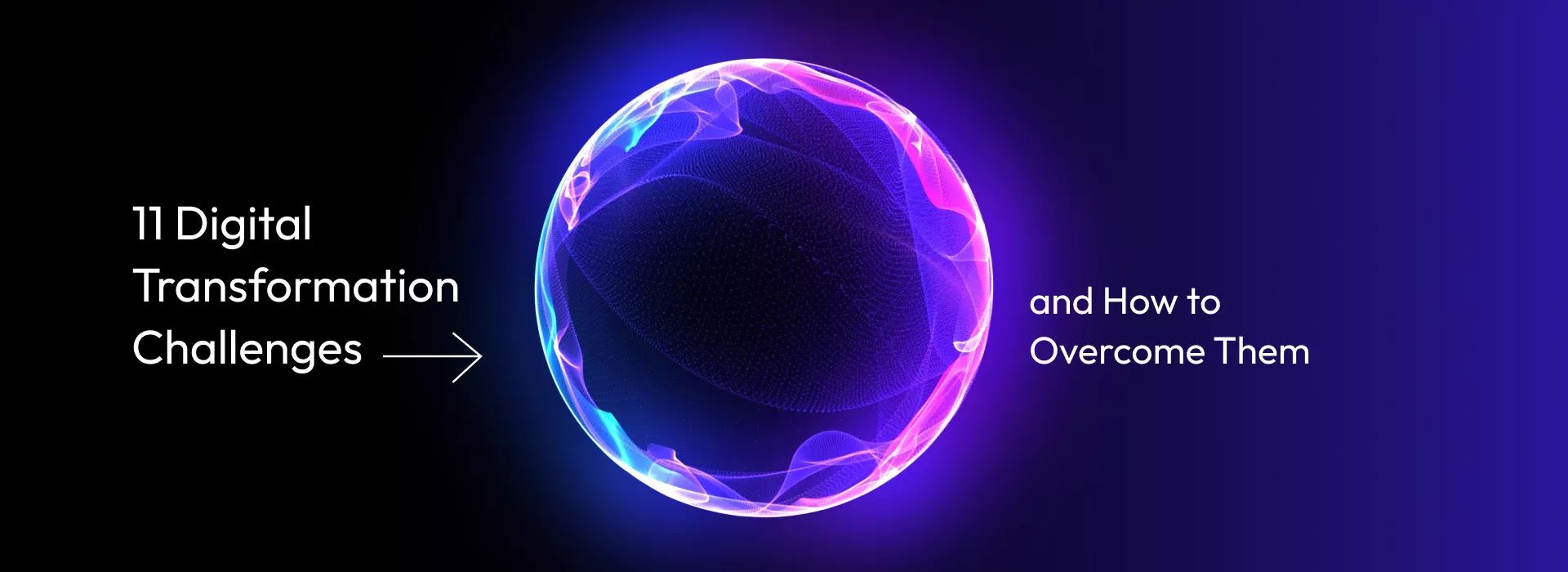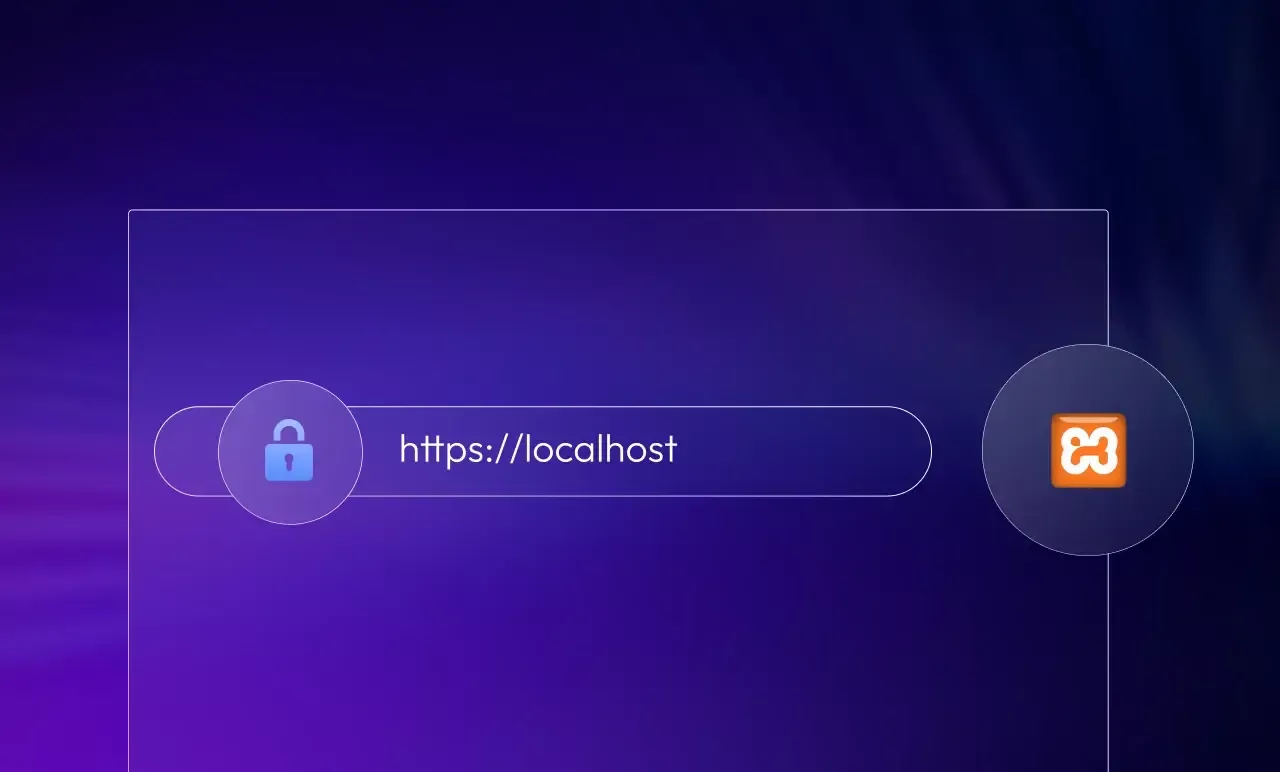Data Storage Decoded: Data Warehouse vs Data Lake Explained
11 Digital Transformation Challenges and How to Overcome Them
Digital transformation has been the buzz in the tech world, and it sounds pretty straightforward. Adopt new technology, automate processes, and drive efficiency. Yet, behind these lie digital transformation challenges that introduce a whole new set of complexities.
More than software upgrades or cloud migrations, it’s about people, adaptability, and breaking free from outdated ways of thinking.
Many organizations struggle, not because they lack resources, but because they underestimate the real challenges. These include, but are not limited to, resistance to change, fragmented systems, misaligned goals, and the invisible friction that slows progress.
True transformation demands more than technology; it requires bold decisions, cultural shifts, and a clear vision for the future.
So, let’s take a deeper look into the often-overlooked challenges of digital transformation in business and how to navigate them with confidence.
Digital Transformation: Challenges Faced by Organizations and Their Potential Solutions
Although the journey involves many obstacles, organizations must examine both technical and human factors that can slow progress or fuel growth.
By understanding the following complexities, enterprises can be better positioned to learn how to overcome digital transformation challenges for sustainable growth and competitive advantage.
Top 11 Digital Transformation Challenges and Their Solutions
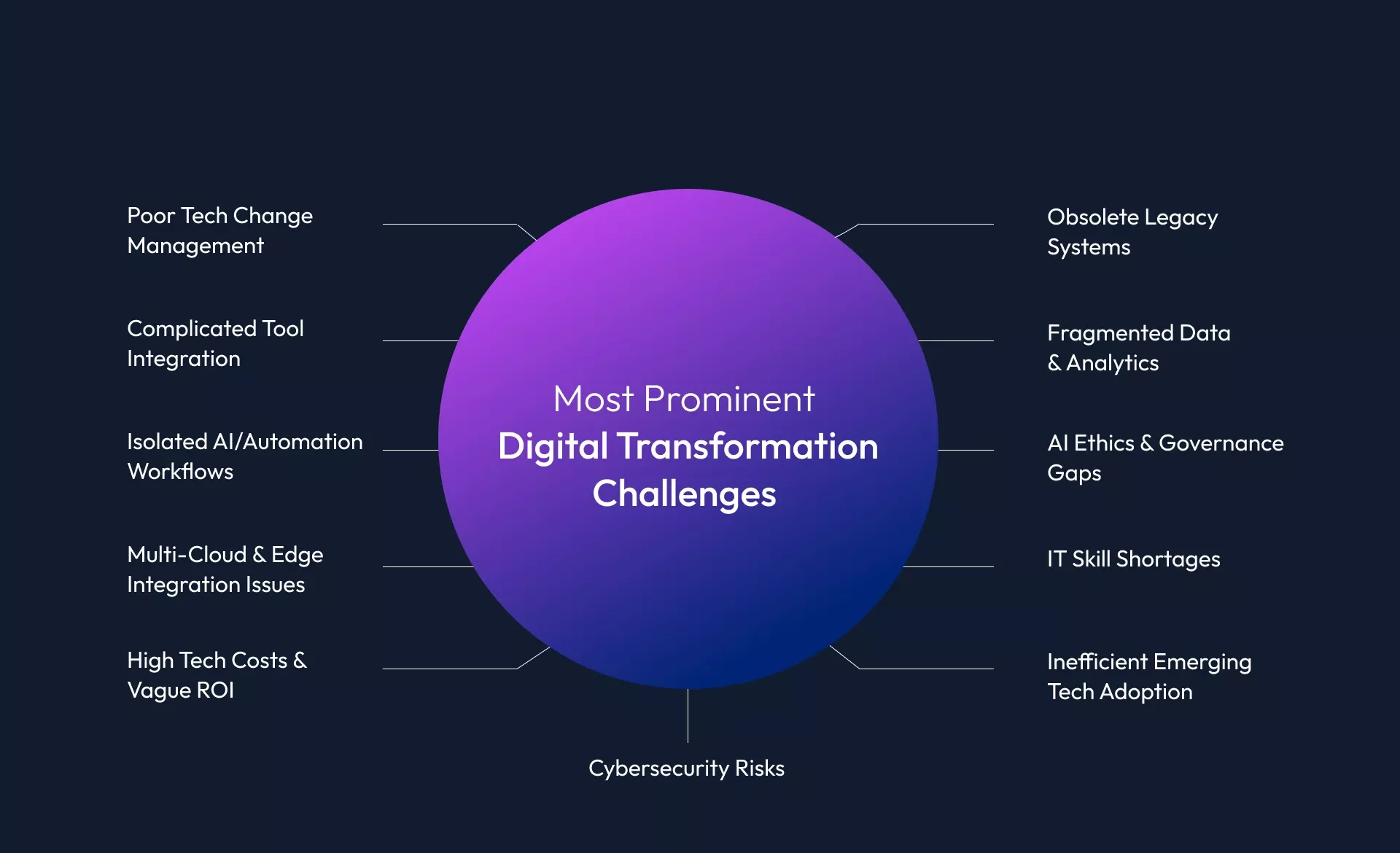
1. Ineffective Technical Change Management
If you are wondering what the biggest barrier to digital transformation is, it is mismanagement.
Efficient digital transformation begins with a well-planned technical change management strategy. Scaling infrastructure to meet growing demands while managing technical debt is a critical technical challenge.
Organizations must ensure that their IT architecture can evolve without being hampered by legacy constraints. Without a clear roadmap for upgrading systems and integrating new technologies, even state-of-the-art solutions can fall short of expectations.
Key Technical Issues:
- Inadequate planning for system integrations and software upgrades
- Poor documentation and communication of technical roadmaps
- Lack of standardized frameworks to manage infrastructure changes
Solutions:
- Develop a Detailed Technical Roadmap: Define clear milestones and timelines for integrating new systems and upgrading legacy infrastructure.
- Implement Structured Change Frameworks: Adopt methodologies such as ITIL or DevOps to guide systematic transitions.
- Automate Deployment Processes: Use version control and automated pipelines to streamline updates and enable rollback when necessary.
2. Outdated Legacy Systems that Stifle Modernization
Years of patchwork IT solutions have resulted in rigid, monolithic systems that impede scalability and innovation. Modernizing these systems is not just an infrastructure upgrade, it requires a complete rethinking of your technical architecture.
Key Technical Issues:
- Accumulated technical debt and inflexible monolithic architectures
- Data migration challenges and incompatibility issues
- Limited interoperability due to outdated protocols
Solutions:
- Progressive Re-architecting: Transition from monolithic applications to microservices-based, event-driven architectures that allow incremental modernization.
- API-First Design: Implement open, standardized APIs and headless technologies to facilitate smooth integration between legacy and modern systems.
- AI-Driven Code Refactoring: Utilize automated refactoring tools to update codebases incrementally, minimizing disruptions during modernization.
3. Complex Software Integration and Tool Adoption
As organizations embrace innovative digital tools, integrating these systems into an existing IT landscape becomes a formidable challenge. Ensuring seamless interaction between new and legacy applications is key to realizing the potential of digital transformation.
Key Technical Issues:
- Integration complexities across diverse software platforms
- Disjointed user experiences due to siloed applications
- Customization challenges in aligning new tools with legacy workflows
Solutions:
- Modular, API-Driven Architecture: Build systems with standardized APIs to ensure that every component communicates effectively.
- Digital Adoption Platforms (DAPs): Leverage tools like Whatfix to provide in-app guidance, interactive walkthroughs, and contextual training that help users navigate new software effortlessly.
- Continuous Onboarding and Support: Develop robust training and support programs to reduce resistance and accelerate user proficiency.
4. Data Fragmentation and Inconsistent Analytics
One of the prominent digital transformation challenges is fragmented data across disparate systems. It limits the ability to make informed decisions in real-time. A unified data strategy is essential for enabling robust analytics and deriving actionable insights.
Key Technical Issues:
- Disparate data sources prevent a single source of truth
- Inconsistent data quality and governance across platforms
- Latency issues affecting the timeliness of analytics
Solutions:
- Centralized Data Platforms: Create data lakes or warehouses that aggregate and harmonize information from on-premise and cloud environments.
- AI-Powered Real-Time Analytics: Integrate machine learning models that analyze data on the fly, enabling predictive insights and agile decision-making.
- Automated Data Governance: Employ tools that enforce data quality, security, and compliance policies continuously.
5. Disconnected AI and Automation Workflows
While many organizations invest in AI and automation, the technical integration with existing workflows remains fragmented. Scaling AI effectively requires robust orchestration, governance, and seamless process integration.
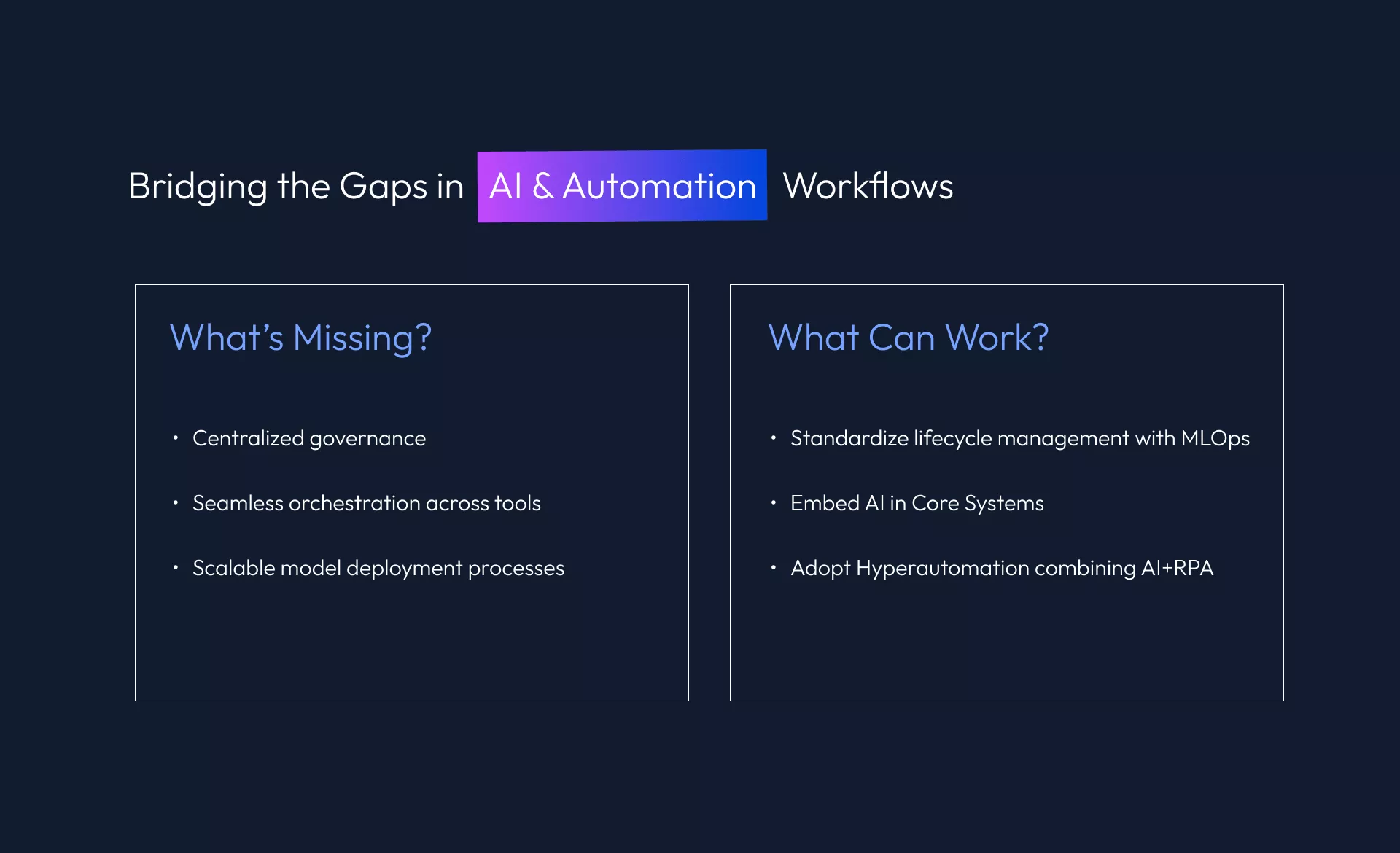
Key Technical Issues:
- Disparate AI initiatives that lack centralized governance
- Inadequate orchestration between AI systems, robotic process automation (RPA), and existing workflows
- Absence of standardized pipelines for model development and deployment (MLOps)
Solutions:
- Standardize with MLOps: Use cloud-based pipelines to ensure consistent development, training, and deployment of AI models.
- Embed AI in Business Processes: Integrate AI-driven decision intelligence directly into core systems to support real-time operations.
- Adopt Hyperautomation: Combine AI with RPA to automate end-to-end processes, thereby boosting operational efficiency.
6. Multi-Cloud and Edge Computing Integration Challenges
Adopting a multi-cloud environment and leveraging edge computing can offer significant benefits. However, it can also introduce technical complexity, which can pose as one of the challenges in digital transformation. Balancing latency, compliance, and cost requires a sophisticated orchestration strategy.
Key Technical Issues:
- Vendor lock-in and integration challenges across different cloud platforms
- Latency and data residency complications in distributed environments
- Balancing the load between edge devices and centralized cloud infrastructure
Solutions:
- Federated Cloud Orchestration: Use cloud-agnostic tools like Kubernetes and Anthos to manage workloads seamlessly across multiple clouds.
- Edge AI and Serverless Architectures: Deploy lightweight AI models at the edge while using serverless computing to handle variable workloads cost-effectively.
- Optimize Data Gravity: Strategically determine where data should be processed, locally at the edge or centrally in the cloud, based on latency, compliance, and cost requirements.
7. Cybersecurity Vulnerabilities
The expanding digital footprint increases exposure to sophisticated cyber threats. Traditional security frameworks are challenged by advanced persistent threats and emerging quantum computing risks, demanding a modern, proactive security approach.
Key Technical Issues:
- Exposure to advanced persistent threats (APTs) and data breaches
- Vulnerabilities in legacy security infrastructures reliant on perimeter-based defenses
- Future risks of digital transformation from quantum computing compromising current encryption standards
Solutions:
- Zero-Trust Architecture: Implement identity-driven security measures that continuously verify access and monitor real-time threats.
- Transition to Post-Quantum Cryptography: Begin integrating quantum-resistant encryption algorithms to safeguard sensitive data for the future.
- AI-Driven Threat Mitigation: Deploy autonomous anomaly detection and automated response systems to proactively neutralize cyber threats.
8. Ethical AI and Governance Uncertainties
As AI becomes integral to decision-making, technical digital transformation challenges such as bias, lack of transparency, and regulatory uncertainties emerge. Addressing these issues is essential to maintain digital trust and ensure responsible deployment.
Key Technical Issues:
- “Black box” AI models that lack interpretability
- Inconsistent governance and monitoring across AI deployments
- Regulatory challenges, including compliance with frameworks like the EU AI Act
Solutions:
- Explainable AI (XAI): Develop AI models with built-in transparency to clarify how decisions are made.
- Robust AI Governance: Use continuous monitoring tools and adopt ethical guidelines to standardize AI deployments across the organization.
- Decentralized Identity Management: Leverage blockchain-based solutions for secure and verifiable digital identities, bolstering trust in automated systems.
9. IT Talent Shortages and Skill Gaps
A lack of skilled IT professionals across the four core pillars of digital transformation can significantly slow down progress and impact outcomes. These areas include cybersecurity, cloud architecture, customer experience, and data analytics. Building and retaining a high-performing technical team is vital for sustained innovation.
Key Technical Issues:
- Limited availability of specialists in key technical domains
- Difficulty recruiting and retaining top IT talent
- Gaps in in-house expertise for managing advanced integrations
Solutions:
- Upskill and Reskill Programs: Invest in ongoing training, certifications, and workshops to cultivate internal technical expertise.
- Flexible Talent Models: Complement full-time teams with consultants, freelancers, or digital transformation experts to bridge skill gaps.
- Targeted Recruitment Strategies: Develop focused hiring initiatives to attract professionals with critical technical skills.
10. Operational Inefficiencies in Integration of Emerging Technologies
Adopting disruptive technologies like IoT, blockchain, and AR/VR offers significant opportunities. However, one of the digital transformation challenges comprises their integration into existing systems that require clear strategies and robust testing.
Key Technical Issues:
- Lack of clear integration strategies for novel technologies
- Interoperability issues with existing IT ecosystems
- Uncertainty around standards and best practices for emerging tech
Solutions:
- Modular Integration: Use a flexible, API-driven approach to incorporate new technologies seamlessly into the current infrastructure.
- Sandbox Testing: Leverage sandbox environments to validate interoperability, performance, and security before full-scale adoption.
- Interoperability Frameworks: Invest in frameworks and standards that facilitate seamless data exchange and communication between diverse systems.
11. High Technical Costs and Unclear ROI Measurement
Balancing high technical investments with demonstrable business outcomes is one of the challenges of digital transformation. Traditional IT metrics often fail to capture the nuanced benefits of digital transformation, making it crucial to measure ROI through a technical lens.
Key Technical Issues:
- High capital expenditure for advanced technologies and system integrations
- Difficulty linking technical improvements to quantifiable business performance
- Limited real-time tracking of system performance and user engagement
Solutions:
- Outcome-Driven Metrics: Transition from traditional IT KPIs to comprehensive metrics that capture revenue acceleration, enhanced user experience, and competitive advantage.
- Digital Twin Technology: Leverage AI-driven digital twins to simulate, test, and forecast the impact of technical changes before wide-scale rollout.
- Agile Value Streams: Pilot technical initiatives in controlled environments, then iteratively scale successful projects to optimize ROI and resource allocation.
The Road to Continuous Transformation
Successful digital transformation isn’t a one-time initiative; it’s an ongoing, enterprise-wide evolution. The organizations that excel recognize that technology alone isn’t the driving force. Other factors like execution, governance, and adaptability also play a significant role in driving success.
Addressing complex technical barriers to digital transformation requires a strategic approach that balances innovation with operational efficiency. This ensures that initiatives don’t just launch but also scale and sustain impact.
The key to long-term success lies in integrating the right tools and frameworks that simplify tackling digital transformation challenges and opportunities without disrupting workflows.
In fact, with the right approach, businesses can turn challenges into opportunities, creating a digital ecosystem that’s not just efficient but truly future-ready. Those who master this balance won’t just survive the digital shift, they’ll lead it!
Email us or Talk to us at +91-98367-81929 or Simply Contact Us through the website.
Let's Connect


